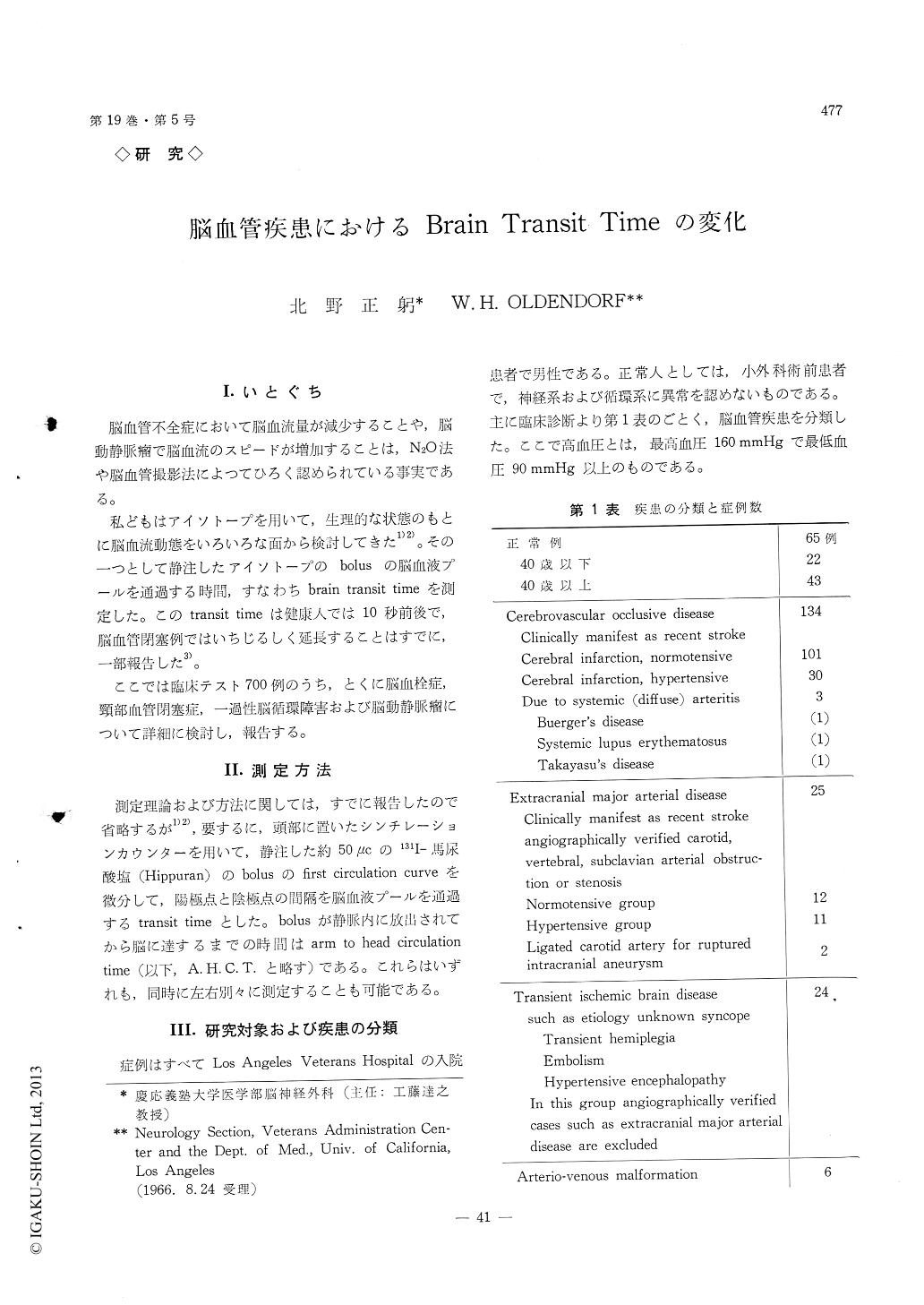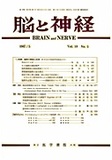Japanese
English
- 有料閲覧
- Abstract 文献概要
- 1ページ目 Look Inside
I.いとぐち
脳血管不全症において脳血流量が減少することや,脳動静脈瘤で脳血流のスピードが増加することは,N2O法や脳血管撮影法によってひろく認められている事実である。
私どもはアイソトープを用いて,生理的な状態のもとに脳血流動態をいろいろな面から検討してきた1)2)。その一つとして静注したアイソトープのbolusの脳血液プールを通過する時間,すなわちbrain transit timeを測定した。このtransit timeは健康人では10秒前後で,脳血管閉塞例ではいちじるしく延長することはすでに,一部報告した3)。
Brain blood pool transit times were studied in relation to arm to head circulation time in 254 sub-jects of normals, cerebral vascular occlusion, extra-cranial major arterial disease, transient ischemic disease and A-V malformation. These were mea-sured by an intravenous radioisotope technique utilizing external monitoring of brain passage of non-diffusible radioactive indicators.
B.T.T. is 10±0.2sec. in healthy subjects with general incease in advanced age. Marked prolonga-tion of B.T.T. is seen normotensive cerebrovas-cular disease (14.0±0.3). Moderate prolongation is seen in normotensive extracranial major arterial di-sease. Slight prolongation is seen in hypertensive cerebral infarctin and transient cerebral ischemia. Shortening of B.T.T. is seen in A-V malforma-tion.
Generally in cerebrovascular disease accompanied with hypertention, prolongation of B.T.T. is much less as well as A.H.C.T. than normotensive group.
There is generally a positive relationship between B.T.T. and A.H.C.T. and also between B.T.T. and clinical course in cerebral infarction and A-V malformation.
The significance of this test as a screening test is discussed, particularly in subclinical cerebral scle-rosis.

Copyright © 1967, Igaku-Shoin Ltd. All rights reserved.


